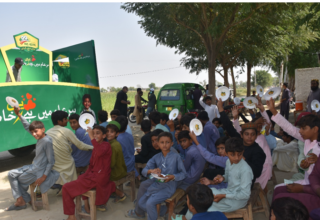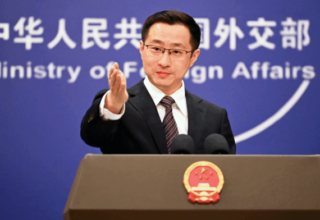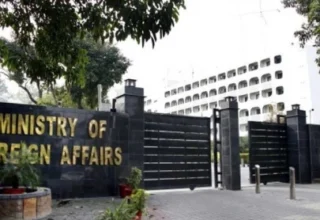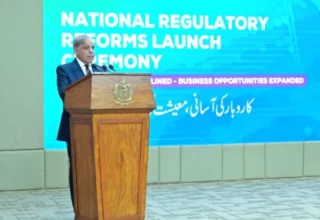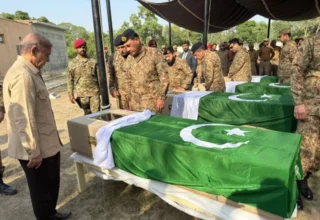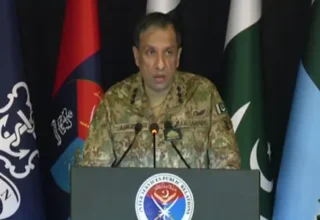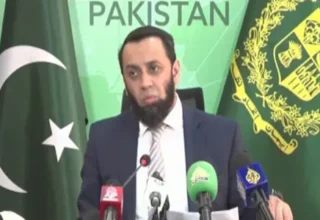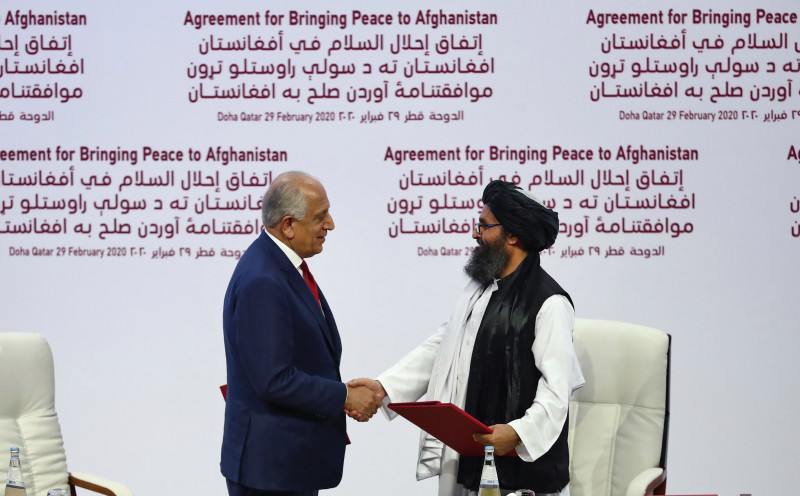

Dr Hussain Yasa, the author.
Prologue
With the emergence of the political world, the concept of nationhood and the notion of pragmatic ethics of responsibility took over the political psyche of the emerging nations to survive among other preying nations. In the existing world of REALPOLITIK governed by normative political morals neither peace nor related harmony remains to take a natural course or to become a gift of nature, it instead becomes a consequence of pure human activity that is mostly subjected to biases governing those socio-political constructs. The peace has become more of a relative term and each nation of the world has its own perceived security challenges and economic opportunities upon which they tend to decide and rest the very purpose of their existence.
In such a competitive global political environment, the foremost demand factor is the willingness of that particular nation that it organizes itself in comprehensive and elaborate institutions to enable it to reveal credible notion of its sovereignty, reliability in its strength and to manifest resolve, rationally embedded in its political system.
Although, there are many subfactors, but the political system remains over the top that empowers a country and its people to meet multidimensional domestic and international challenges through minimizing its vulnerabilities and compensating its weaknesses. Thus, the political system, compatible with the ground realities of a country is key to stability and prosperity. It becomes more vital for the countries with deep cultural, ethnic, lingual and religious diversities.
Extensive studies based on historical experiences have developed many political theories and ideas for the management of human societies so that different people living in a country would live with harmony devoid of fear from torture and discrimination.
But again, the Political systems are not one of the celestial orders, but a man-made phenomenon that is evolving over time.
Unfortunately, Afghanistan is one of the rare case studies which always relied upon inappropriate ideas of state and nation-building since the late nineteenth century. In fact, the basis of the current political system in Afghanistan stems from the “Nation-State” theory, which first emerged after the Treaty of Westphalia in 1648 which divided Europe into more understandable geo-political maps. It evolved over time and emerged as a new political system after the French revolution by the end of the eighteenth century.
The purpose is not to challenge the overall theory, it could still be functioning and vibrant for the socially and geographically homogeneous societies; But in heterogeneous multi-fabric societies it has been proven not very responsive.
On the contrary, in pluralistic societies, the idea of ”State-Nation Theory” must be relied upon. The idea emphasizes that the existence of a nation does not require the establishment of a state; rather it is the state that needs nation-building for its survival. But not by force, oppression and imposition of false narratives and misleading legacies rather through its principled and institutional means i.e. democratic system based on equality and social justice institutionally. This is a natural course that constructs a “nation” from the deeply diverse people.
Modern Age Governance with the Eighteenth-Century Mindset
The “Unitary-Presidential” political system in Afghanistan is also the product of the same idea of a “Nation-State”. The basic notion was that this system would guarantee national unity and more effective governance, but in reality, it has strengthened the tribal system and the real power usurped by the certain circle and stratum with right of ownership.
Afghanistan constantly kept distance from the new ideas of governance and the form of government regarding the vertical power structure remained unchanged.
The system that guarantees equal access to all political, economic, and cultural activities and opportunities with balanced development across the country was never a matter of priority on the table of the political Elite.
Instead, in order to create an imaginary nation, the forcibly absorption of micro-ethnic, linguistic and cultural identities into a relatively larger identity, or to disrupt the natural demographics of a country through forced settlement by a particular ethnic group, was the official policy. There was no realization that ethnicity, language, color and gender are natural, but the nation is not a God-given gift rather a term that refers to a political society, emerges from a continuous human process. Thus, the natural course of the social life that constructs a “nation” from the deeply diverse people was never materialized rather fueled ethnic hostilities. As well as undermined its already in shamble functioning of statehood.
Except for that of China which comprises around 90% of the Han Ethnic Group, all other neighbouring countries of Afghanistan are multiethnic, multilingual and are having religious variance. However, compared to Afghanistan, the rifts among diverse communities in neighbouring nations, if studied in isolation, are negligible and peace and harmony among them generally prevail.
Pakistan and India, two case studies
Pakistan
Pakistan is one of the countries in Afghanistan’s neighbourhood sharing almost all its eastern border. After its independence in 1947, Pakistan was vulnerable from every side with no defined economic structure and poverty reigned with nothing to spare on its security. The influx of 10-12 million refugees caused an enormous strain on already meager economic structure. The large portion of defence and industrial infrastructures went to India’s share.
For the first decade of its independence, Pakistan remained as a British Dominion and dependent on the Section 8 of the Indian Independence Act, 1947 and the Government of India Act 1935 as a working constitution. On March 23, 1956, Pakistan adopted its first constitution. The “Unitary-Semi-Presidential” system based on the Nation-State Theory was introduced. This system was not suitable for the post-colonial multi-ethnic society of Pakistan, and it was likely that it would not be possible for this system to distribute power fairly and ensure social justice.
Probably, the government of Pakistan at that time, who feared India, wanted to maintain the unity of Pakistan and confront a powerful India by creating a centralized system with iron power. But it turned out to be a misconception. Not only did that political system not resolve the internal crisis in Pakistan but it also intensified the feeling of exclusion among the various ethnic groups in Pakistan.
For 24 years after independence, Pakistan has endured a number of crises, including two wars with India in 1948 and 1965 and, worst of all, the secession of East Pakistan (modern-day Bangladesh) in 1971. According to some Pakistani analysts, the root of all the anomalies laid in the inappropriate “Unitary-semi-presidential” system.
In the early 1970s, after Zulfiqar Ali Bhutto came into power, Pakistan changed the basis of its political system and adopted a new constitution in 1973 with the “Federal-Parliamentary System”. Pakistan was divided into four provinces, with its own government and the right to self-determination to the people of each Province (State). Shortly afterwards, Pakistan made up for many of its past shortcomings and soon emerged as a potent nation on the international arena.
The devotion and vigorous support of the deeply diverse people of Pakistan for their country have been observed from time to time. The sense of Pakistani nationalism directly stems from its root, though branches may take its turn but always remain fixed to stem identifying as one nation.
As per their size in population, communities are involved in the decision-making process from a lower level local power structure up to the provincial and national level.
Today, despite the security and economic as well as good governance issues, Pakistan does not have issues that suggest any kind of ethnic or political segregation constitutionally.
India
The Republic of India is another prominent example in this regard. India and Pakistan gained independence from colonial Britain on the same day; But India officially declared its Independence Day on August 15, 1947, a day after Pakistan.
Unlike Pakistan, Indian politicians did not cling to the so-called “great nation of India” from the day one; but instead focused on the diverse complex coarseness within India. Indian National Congress tasked Dr. Bhimrao Ramji Ambedkar, from the “Shudar” religious minority (the least class of the Hindu community), not even a member of the Congress party, to draft the new constitution of India.
India had a population of over 361 million at the time of independence, consisting of about 2,000 small and large ethnic groups with the followers of tens of religions. Dr. Ambedkar drafted the Constitution of India, taking into account the terrestrial realities and the profound diversity within the Indian society. The constitution that recognized all religious, ethnic, linguistic and cultural differences institutionally. It came into force on January 24, 1950. The mainstay of the Indian constitution is the “Federal-Parliamentary System”, which is based on the idea of a “State-Nation Theory”. Religiously, India is a secular country and all religions and denominations are recognized by its followers.
Today, India’s population is estimated at more than 1.3 billion, with another 200 million likely to be left out from the census. About 79% of Indians are followers of multiple Hindu religions and the second largest population is Muslims, who make up about 14.23% of the population. India’s Muslim population is around 193 million, which is only 15 million less than Pakistan.
India, like Pakistan, has its own problems, such as poverty, lack of good governance, and the growing extremist “Hinduism” or Hindutva tendencies and so on; But it must be admitted that if India remains united and became an economic power in the region, it owes much to the “federal-parliamentary system” based on the “State-Nation Theory”.
The experience of Pakistan and India, two regional rivals, shows that nation-building will not evolve in any country unless the people of a country see in practice that they enjoy all opportunities fairly and equitably. Different groups must be ensured that, given their population size, they are involved in the decision-making process, from the lowest local government structure to the state and national levels.
To whatever extent the people of a country distance themselves from fear, the foundations of the system will become stronger. Therefore, in order to build a “nation”, demographic diversity must be recognized institutionally and addressed through a comprehensive political approach.
Afghanistan which is the home of several ethnic, cultural and religious minorities has passed through a different course of history. In the 19th and 20th century the monarch and ethnic political elites associated with it enjoyed absolute power which ostensibly reflected in the behaviour of the state. The nature and approach of governance was distributed in kind based on ethnic discrimination, often with brutal expression of power for control over its subjects through use of force and unruly judicial system encouraging slavery.
In sum, it was far from the natural course of human development that was taking place in the region forcing Afghan society into the abyss of an isolated tribal system with a strong desire of resisting change.
Unfortunately, today’s Afghanistan only wrapped in the robe of democracy. It has a political elite that is medieval from inside who only learned to thrive on the notion of ethnic dominance and living in the comfort of divide and rule policy based on corruption, nepotism and false sense of ethnic pride.
The Presidential-Unitary system, the current enacted system of Afghanistan, appears to be dysfunctional. The strong centralized administration run with the principle under “one man-show” and concentrated power in a close circle promote the idea of ownership and the right-to-rule as an immutable divine gift for them, which is in clear violation of any modern-day humane social contracts.
The current system promotes the spirit of ethnic supremacy, at times giving an impression of being apartheid. Communities in search of emancipation and their rightful equality in governance are in dire need to muster their strength to bring changes in Kabul, the only power center.
The cognitive notion of resistance to bring changes in Kabul needs to be organized across ethnicities to avoid civil war, or mere control of Kabul has always remained counterproductive and opens the door for yet another civil war. The history of Afghanistan is full of the struggle to cease Kabul. The communities in control of Kabul with their repressive attitude tried to subjugate other communities in gaining successes for a short period of time, however, the suppressed communities regained their power to resist.
Since 9/11, there is no tangible feeling of stability and effective government, even though there were no dearth of resources and international support.
Afghanistan’s blaming neighboring states for its instabilities are proving to be merely a political narrative, again an ethnic tribal notion of creating enemies to hide behind to cover for its incompetence and self-centeredness. Afghanistan’s time to time emerging border conflicts with Nation-Building on incorrect Narratives and False Legacies
In Afghanistan, among political elites there is a deliberate denial on identifying the internal source of conflict and fault lines. The constructed conception of an unassailable nation prevails, and false legacies are promoted.
For example, Afghanistan blames neighboring countries as a major source of its instability. Inside, if people speak differently, they are defined as bloodthirsty warlords and human rights violators, the political parties, those having roots among the masses are called the destroyers of the country. It shows the main source of hypocrisy in the country.
The main argument against political parties and the non-partisanship of politics in the country is rooted in this thinking to pave the way for monopoly and centralism.
On the other hand, instead of presenting a clear vision for the future of the country, they institutionalize false and imaginative narratives such as “Five Thousand Years of History”, “Impregnable Nation” and “Afghanistan, the graveyard of Emperors” in the public mind. But the main purpose is to ignore the main causes of the current unrest, which goes back to the same old and failed thinking: running the country in the 21st century with the norms of the 19th century.
The result of all these efforts to maintain the status quo has been nothing but the continual deterioration and increasing turmoil and the bleak outlook of the political landscape.
Fear, the Ultimate Outcome
The governing system of Afghanistan has created an environment of fear. For the political elite in power the fear is of losing Kabul and for the people out of power, the fear is that Kabul may use power to suppress them. The fear is boiling up and surpassing reason among political forces of Afghanistan.
The turmoil in Afghanistan did not start with the Taliban entry in the political scene rather the irreconcilable conflicting groups were engaged with each other much earlier. The Taliban just added fuel to the fire.
The countries around Afghanistan also feel insecure because of its political eccentricity to defy sensibility. Afghan government generates fear that their perceived adversaries in its immediate neighborhood might grab control to compromise Afghanistan’s so-called sovereignty. The second card in the game of fear often used is the Trans frontier proliferation of terrorism and extremism from Afghanistan to its all neighboring countries.
The US is apprehensive that the soil of Afghanistan may be used against it once again. The Central Asian States in the north have the same fear. Thus, the fear is not confined only to the domestic stakeholders but also the region.
The Fear Factor- The challenge on the path of a successful Peace Process
The ongoing Peace Process is also marked with apprehensions and fears.
1-The Taliban does not want to be the part of the current set up and are not ready to lay down their weapons because they are driven by fear of losing their position of power and that they might become irrelevant in the power equation. Secondly, their position of not compromising on negating the modern governance system, which makes it beyond any reasonable political resolution of the conflict, again because of fear. The Taliban stand to avoid negotiating with the government is also seen as an expression of power play mixed with fear.
2-Despite growing legitimacy issues, the Afghan Government wants to lead the Peace Process under the fear of its exposure that it has become a real hurdle in the path of human development and harmony, which will decrease its already eroding political stature.
3-The government in Afghanistan is afraid that the outcome of the peace process will lead to its departure. The government has decided to take the peace initiative and will extend it as long as possible.
4-The Non- Pashtun constituencies have the deep fear of Taliban domination. They fear to lose their identities and the legitimate share in the power play. They fear that Taliban will forcefully impose the Sharia system of their choice which is not acceptable for them. They want to be the part of a decentralized political system rather than to be the part of any short-term consociationalism based on benignity by the ruling Elite.
5-Non-governmental elements within the current system, which includes political parties, civil society, and women fear that this ambiguous peace process will undermine twenty years of civic achievement.
The above-mentioned points indicate that the fear is everywhere, and no area is free from fear.
The Recommended Solution
Some analysts believe that the way to peace and prosperity depend on the success of the peace process with the Taliban. The question is whether Afghanistan had full stability and security before the rise of the Taliban in 1994. The Taliban are not the main cause of the crisis; Rather, they were fueling the fire that had been raging in Afghanistan for some time.
With the current dysfunctional political system with flawed horizontal and vertical distribution of power, peace and stability will remain a distant dream in Afghanistan. The fragile ceasefire may prevail for some time, but the peace cannot be achieved. The ceasefire remains subject to a tiny pretext to fade away. How a new peaceful and stable Afghanistan could be built on the same foundation which itself is the prime source of the conflict by itself? A country cannot be built on false legacies, irrational narratives and misplaced sense of pride.
The durable peace, stability and harmony is not possible without a new approach, a new political system.
1-Afghanistan has to abandon the Nation-State theory rather a new system should be built on the basis of the State-Nation approach which recognizes the diversity and suggests the accommodative decentralized Federal-Parliamentary system. The federal system has more advantages than the monolithic system and is easy and natural and compatible with the ground realities.
2-The Federal System is preferable because it is easy and more natural. The major communities have their geography with their cultural and historical backgrounds within their natural boundaries. They possessed these lands for centuries even before Afghanistan came into being. There are pockets of a mixed population in each and every part of Afghanistan but still it is not a substantial barrier against this idea.
3-The Federal System not only accommodates the communities in Afghanistan but also enables the countries around Afghanistan to secure their legitimate interests through legitimate means. Countries in the immediate neighborhood need a security zone next to their borders, from where there should not be any potential security threat as well as they should be given due opportunities to pursue their geopolitical and geo-economic interests.
4-The Parliamentary form of democracy has been a better option for a country with multiple ethnic identities on a subnational level. It empowers the smaller communities to raise their voice on the various issues concerning them.
5-Afghanistan needs a Proportional Representation Electoral System. It brings it closer to the terrestrial and social realities of Afghanistan, as well as to Afghanistan’s comprehensive politics. It also provides an opportunity to play a regular role in the Afghan political process. This system removes the parliament from a scattered form of salvation and will make it an effective pillar of the system. A parliamentary example in which all members consist of independent people, it is not seen in a democratic world. In such parliaments it is natural that the lack of regular political blocs creates parliamentary groups based on tribal and even mafia tendencies, and as a result, one of the basic pillars of the system itself becomes a problem.
6- Afghanistan does not have authentic data of its inhabitants. Again, the fear of the avoidance of the false narrative of “Majority-Minority”, being imposed by force. There is no realization that a thorough statistics of the population across the country is how much vital for the development and the provision of the basic service to the people in need. Therefore, Afghanistan needs the conduction of a fair census under the supervision of the UN.
Therefore, Afghanistan needs the conduction of a fair census under the supervision of the UN.

Disclaimer: The views are personal of the author. The map is just for the purpose to show the probable Federal Units. It might have technical flaws

